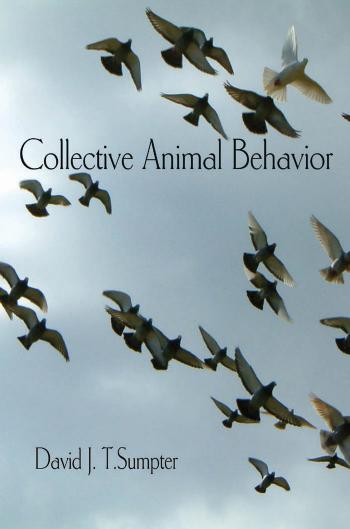Collective Animal Behavior by David J. T. Sumpter

Author:David J. T. Sumpter [Sumpter, David J. T.]
Language: eng
Format: epub, pdf
Publisher: Princeton University Press
Published: 2010-09-27T00:00:00+00:00
Raid Networks
Army ant species (Franks 1989; Schneirla 1971; Topoff 1984), as well as Leptogenys processionalis (Ganeshaiah & Veena 1991), and Pheidologeton diversus (Moffett 1988) all form swarm raid trails that last for a couple of days or less. These trails result from strong positive feedback from recruitment pheromones. The short-lasting raid patterns by the army ant (Deneubourg & Goss 1989; Franks 1991) and the predatory ant L. processionalis (Ganeshaiah & Veena 1991) have been measured in detail. These networks at first expand as the ants search for food and then tend to contract once resource items are located and foraging is focused on these resources. As such, these exploratory networks provide a trade-off between a minimization of the cost of travel and a maximization of the area over which the ants search for prey items.
Download
Collective Animal Behavior by David J. T. Sumpter.pdf
This site does not store any files on its server. We only index and link to content provided by other sites. Please contact the content providers to delete copyright contents if any and email us, we'll remove relevant links or contents immediately.
| Amphibians | Animal Behavior & Communication |
| Animal Psychology | Ichthyology |
| Invertebrates | Mammals |
| Ornithology | Primatology |
| Reptiles |
Sapiens: A Brief History of Humankind by Yuval Noah Harari(13119)
The Tidewater Tales by John Barth(12045)
Do No Harm Stories of Life, Death and Brain Surgery by Henry Marsh(6349)
Mastermind: How to Think Like Sherlock Holmes by Maria Konnikova(6271)
The Thirst by Nesbo Jo(5819)
Why We Sleep: Unlocking the Power of Sleep and Dreams by Matthew Walker(5678)
Sapiens by Yuval Noah Harari(4575)
Life 3.0: Being Human in the Age of Artificial Intelligence by Tegmark Max(4536)
The Longevity Diet by Valter Longo(4464)
The Rules Do Not Apply by Ariel Levy(3935)
The Body: A Guide for Occupants by Bill Bryson(3855)
The Immortal Life of Henrietta Lacks by Rebecca Skloot(3841)
Why We Sleep by Matthew Walker(3796)
Animal Frequency by Melissa Alvarez(3770)
Yoga Anatomy by Kaminoff Leslie(3724)
Barron's AP Biology by Goldberg M.S. Deborah T(3643)
The Hacking of the American Mind by Robert H. Lustig(3598)
All Creatures Great and Small by James Herriot(3541)
Yoga Anatomy by Leslie Kaminoff & Amy Matthews(3419)
